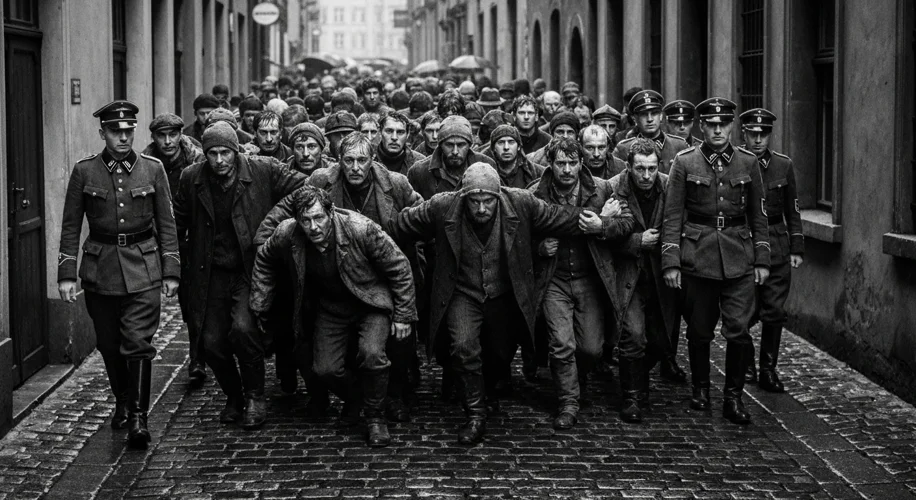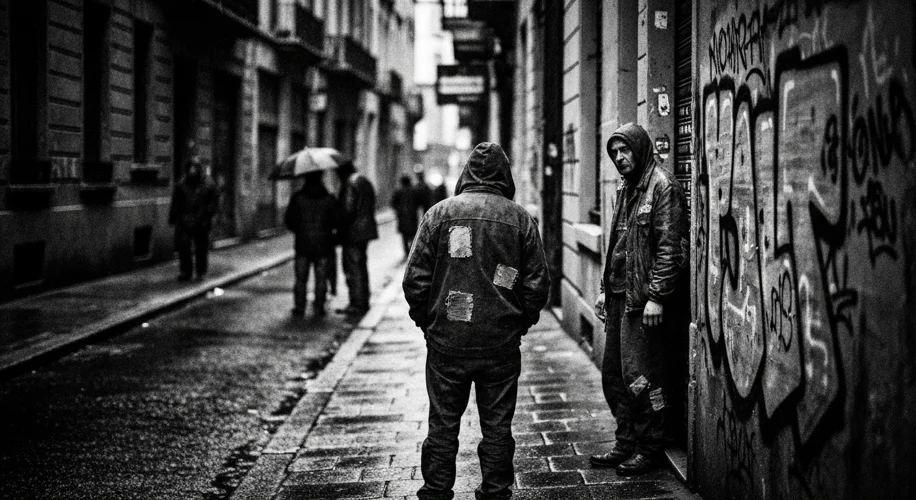In the chilling era of the 1930s and 1940s, as totalitarian regimes tightened their grip across Europe, the specter of homelessness loomed large. But how did these iron-fisted states, obsessed with national purity and social order, view and manage those deemed undesirable, those who had fallen through the cracks of society – the homeless? The experiences of individuals without shelter in Nazi Germany and Fascist Italy offer a grim, often overlooked, chapter in the history of these authoritarian powers.
Nazi Germany: The “Asocial” and the “Work-Shy”
In Nazi ideology, the concept of the Volksgemeinschaft – the national community – was paramount. This vision was built on a foundation of racial purity, physical strength, and unwavering loyalty. Those who deviated from this ideal, or who were perceived as burdens on the state, were systematically targeted. The homeless, often conflated with vagrants, beggars, and the “work-shy” (Arbeitsscheu), fell squarely into this category.
The Nazi regime’s approach to homelessness was not merely about clearing the streets; it was deeply intertwined with its broader eugenic and racial policies. Individuals identified as homeless were often rounded up and subjected to forced labor, institutionalization in workhouses, or, in the most horrific cases, deportation to concentration camps. The “Prevention of Hereditarily Diseased Progeny” law of 1933, for instance, provided a legal framework for sterilizing those deemed genetically “unfit,” a category that could easily encompass the destitute and marginalized.

Historical records indicate that by the late 1930s, hundreds of thousands of “asocial” individuals, including many homeless people, were being interned. These included men and women who did not conform to societal norms, those with mental health issues, and those who struggled to maintain employment, all lumped together and stripped of their dignity. The infamous “police auxiliaries” or “preventive detention” orders allowed for the arbitrary arrest and incarceration of anyone considered a threat to public order, a broad definition that easily ensnared the homeless.
Fascist Italy: Order and Exclusion
Across the border in Fascist Italy, Benito Mussolini’s regime also prioritized order and national strength. While not implementing the same genocidal racial policies as the Nazis, Fascist Italy did view the homeless as a problem that needed to be managed and, preferably, eliminated from public view. The regime’s emphasis on discipline, productivity, and national unity left little room for those who did not contribute to the state’s idealized image.
In the 1930s, Italy saw increased efforts to curb vagrancy and homelessness. Municipalities implemented stricter regulations against begging and loitering. Those found without a fixed abode were often sent to special institutions known as “camps for vagrants” or “agricultural colonies.” These were not places of rehabilitation in the modern sense, but rather sites of confinement and forced labor, designed to remove the “undesirables” from urban centers and make them productive, albeit under duress.
The regime’s propaganda machine worked tirelessly to create an image of a strong, unified Italy. The presence of visible poverty and homelessness directly contradicted this narrative. Therefore, the homeless were often depicted as lazy, immoral, or even subversive elements that threatened the social fabric. This justification allowed for their exclusion and confinement, often with little regard for due process.
A Shared Legacy of Marginalization
While the specific ideologies differed, the treatment of the homeless in both Nazi Germany and Fascist Italy reveals a disturbing commonality: these regimes saw marginalized populations not as citizens in need of support, but as impediments to their vision of a perfect state. The homeless were often the first to be swept aside, their suffering ignored or actively exacerbated in the pursuit of a sterile, controlled national identity. The euphemisms used – “asocial,” “work-shy,” “vagrants” – masked a brutal reality of persecution, internment, and dehumanization. The echoes of this era serve as a stark reminder of how easily those without a voice or a home can become targets when the state prioritizes ideology over humanity.

